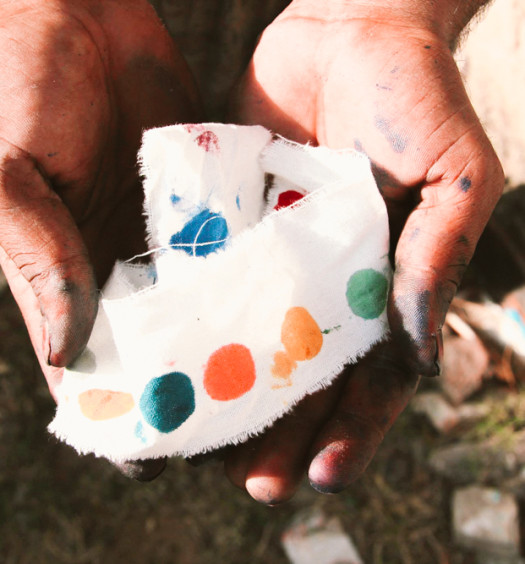Sun Safety Checklist And Skin Cancer Awareness
With the sunny summer days ahead it’s important to remind ourselves of the dangers associated with too much sun exposure. Skin cancer is the most common of all cancers, and while melanoma accounts for only about 2% of skin cancer cases it causes a large majority of skin cancer deaths. Melanoma begins in our melanocytes and can develop anywhere on our skin, with the most common locations being the chest (for men) and the legs (for women).
STATISTICS
According to cancer.org, melanoma cases have been rising over the last 40 years and will continue:
- An estimated 192,310 cases of melanoma will be diagnosed in the U.S. in 2019 (skincancer.org)
- An estimated 7,230 people will die of melanoma in 2019. Of those, 4,740 will be men and 2,490 will be women.
Did you know that melanoma is one of the most common cancers in young adults, especially young women? Ultraviolet (UV) rays are the cause for most melanoma cases and sunlight is the main source. Tanning beds also contribute tremendous UV damage and their use is highly warned against. Both UVA and UVB rays can damage the skin and lead to cancer, but UVB rays are the most potent. UVC rays are not known to cause cancer, but there are no safe UV rays and we should use reasonable protection against all of them.
Are you at risk for skin cancer? Before you throw on your flip-flops and swimsuit and head out the door to the pool or beach, take a moment to evaluate your risk and take the proper steps to reduce exposure to harmful UV rays. Here’s a handy checklist of the highest risk factors to keep in mind when preparing for the sun:
- Moles—Most moles are benign and won’t cause problems, but the more moles a person has the more likely they are to suffer UV damage and develop melanoma.
- Fair skin, freckling, light hair
- Family history of melanoma
- Immune-suppressed Individuals—If you or anyone in your family has a weakened immune system or is being treated with medication that may suppress the immune system, you have an increased risk of melanoma.
- Age—Don’t be fooled. Although melanoma is more likely to show up in older people, it’s also found in younger populations too. Cancer develops after several exposures to harmful UV rays, not just a single exposure. So, while older people may show higher rates of melanoma, the injury to our cells begins far, far in advance.
- Gender—American men have a higher rate of melanoma than women overall. However, before age 40 the risk is actually higher for women and after age 40 the risk is higher for men.
MYTH: Chemical sunscreens are more effective in protecting us from the sun than natural alternatives. Traditional commercial sunscreens often contain potentially harmful chemicals, such as octinoxate, which has been associated with endocrine disruption, and titanium dioxide, which can break down to promote the production of cancer-causing free radicals. For younger women at already increased risk, many foundations and commercial makeups also contain chemicals that promote free radical formation – a double whammy!
Also, vitamin A and its derivatives (retinol, retinyl palmitate, retinoic acid) are commonly used in everyday personal care products and can cause serious damage to our skin cells. Despite the robust data and supportive studies demonstrating that vitamin A can trigger carcinogenic activity on skin during sun exposure, the FDA and government have delayed taking action to restrict it in sunscreens and cosmetics.
In fact, the sunscreen industry is known to add vitamin A to over 20% of its sunscreens, daily facial moisturizers with sunscreens, and SPF-rated makeup products. Seems a little backwards, right?
The good news is that not only are 100% pure and toxin-free sunscreens equally effective at blocking the sun’s rays, they’re infinitely safer, and better for our health and the planet.
Many natural ingredients have SPF properties alone, and when combined these ingredients can create a powerfully safe sunblock. Whether we’re low or high-risk for melanoma, it’s time to lather up and be cognizant of how much sun we’re getting, while also using the safest sunscreens possible. Limiting sun exposure is also smart and effective.
My suggestion? Apply non-nano zinc oxide, all-natural sunscreen in the morning before you leave the house and continually reapply throughout the day as needed. Doesn’t matter if you’re just running out to do errands or heading to the beach; be safe and sun-responsible this summer!
Sources:
- “Vitamin A-Ok?” on True Goods Blog, January 24, 2014.
- “Don’t Get Burned: Sunscreen Safety Redefined” on True Goods Blog, June 11, 2013.
- “The Problem With Vitamin A” in Environmental Working Group’s (EWG) Guide to Sunscreens (2013), on www.ewg.org.
- “Melanoma Skin Cancer” by the American Cancer Society updated in 2014, on www.cancer.org.
- “What Scientists Say About Vitamin A in Sunscreen” from EWG on June 27, 2011 on www.ewg.org.
- CIR (Cosmetics Ingredient Review). 2007. 2005-06 Annual Review of Cosmetic Ingredient Safety Assessments. International Journal of Toxicology 2008 27: 77. DailyMed. 2010. RETIN-A (tretinoin) cream. Davies RE and Forbes PD. 1988. Retinoids and Photocarcinogenesis. J. Toxicol.-Cut.& Ocular Toxicol. 7(4): 241-253.
- Skincancer.org
LEARN. CONNECT. ACT.
Learn more about True Goods
Connect via Facebook, Twitter, and The Good Blog
Act Subscribe to the True Goods newsletter.
FROM THE EDITOR
At Conscious, we are inspired by remarkable people, and so we set out to tell stories that highlight real human interactions and human dignity. You can read more stories like this when you pick up your copy of Conscious Magazine. Subscribe today via our Conscious Shop and subscribe to Conscious Updates.



